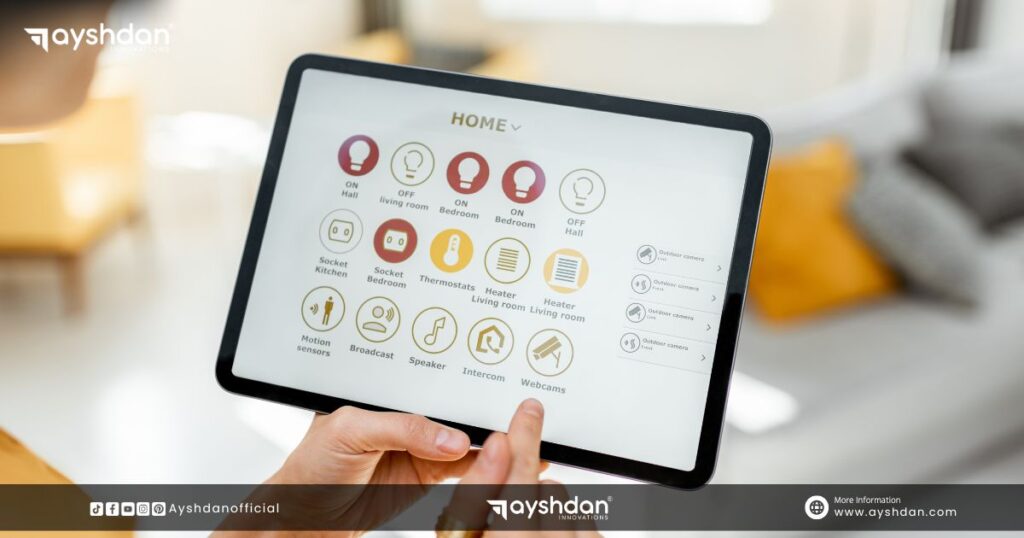When we think of smart homes, we often picture a web of connected devices, apps, and voice assistants—all controlled via Wi-Fi. But what if you want the convenience of a smart home without being tied to the internet, constantly updating apps, or relying on big tech ecosystems?
Whether you’re privacy-conscious, live in a rural area with poor internet, or just prefer a simpler life, it’s absolutely possible to create a smart home without Wi-Fi or apps. It may sound surprising, but many offline automation tools have existed long before the term “smart home” became trendy.
In this guide, we’ll explore how to build a fully functional smart home using offline, app-free tools that give you control, comfort, and efficiency—no internet required.
Why Go App-Free and Wi-Fi-Free?
Before jumping in, let’s understand why someone might want to build a smart home without internet:
- Privacy & Security: No data sharing with cloud services or tech companies.
- Reliability: No connection dropouts or app crashes.
- Low Tech Stress: No constant updates, passwords, or tech troubleshooting.
- Rural Living: Perfect for areas with poor or no internet.
- Simplicity: Set it, forget it, and enjoy.
Smart Home Basics: What Can Work Without Wi-Fi?
Believe it or not, many “smart” functions existed long before Wi-Fi. Here are categories of automation that don’t require internet or apps:
| Feature | App-Free/Offline Solution |
|---|---|
| Lighting Control | Motion sensors, timers, remote switches |
| Heating/Cooling | Programmable thermostats |
| Security | Local-only alarms, door sensors |
| Appliance Control | IR remotes, RF plugs, mechanical timers |
| Access Control | Keypad door locks, fingerprint locks |
| Blinds & Curtains | Manual remotes, solar-powered motors |
| Energy Saving | Smart power strips with sensors |
1. Smart Lighting Without Wi-Fi
Lighting is the easiest way to smarten your home without internet.
Motion Sensors & Timers
Install motion sensors that automatically turn lights on/off when someone enters or leaves a room. No app needed—just hardwired or battery-powered sensors.
Manual Remote-Control Switches
You can use RF-based switches or infrared remotes to control lights from a distance. These devices work even during a power or internet outage.
Mechanical or Digital Timers
Set your lights to turn on/off at certain times. Ideal for outdoor lighting or energy saving.

2. Heating and Cooling the Smart Way
Programmable Thermostats
Old-school programmable thermostats (like Honeywell’s basic models) don’t require Wi-Fi. Set your daily/weekly schedule once, and the device handles the rest.
Standalone Climate Sensors
Some advanced non-connected thermostats include room sensors to adjust temperature based on motion or sunlight—still no app required.
3. Offline Home Security Solutions
Just because you’re offline doesn’t mean you can’t have a secure home.
Local-Only Alarm Systems
Choose systems that rely on local sirens rather than cloud alerts. Brands like SimpliSafe offer offline modes or optional cellular-only setups.
Standalone Motion Detectors & Door Alarms
Battery-powered door/window alarms and PIR motion sensors work independently and emit a loud sound if triggered.
CCTV with Local Storage
Use DVR-based CCTV systems (not IP-based) that store video locally on hard drives. No cloud, no app—just peace of mind.
4. Appliance Control Without Apps
You can control fans, coffee makers, or even water pumps without apps or Wi-Fi.
Infrared (IR) or RF Remote Plugs
These plugs let you turn appliances on/off using a physical remote. Works great for lamps, heaters, or kitchen devices.
Mechanical Timers
Great for things like slow cookers or aquarium lights. Set and forget.
Smart Power Strips
Some strips detect when the main device (like a TV) turns off and cut power to everything else (like a soundbar). No internet needed.
5. Smart Door Locks Without Connectivity
Keep your home secure with advanced locks that don’t require phones or passwords.
Keypad Locks
Locks like the Schlage BE365 allow you to unlock using a code. You can store multiple codes and change them without Wi-Fi.
Fingerprint Locks
Some battery-operated locks use biometrics and work 100% offline.
6. Automated Curtains and Blinds
Want your blinds to rise with the sun? You can do it without an app.
Solar-Powered Blind Motors
Many motorized blinds work with physical remotes and light sensors, lifting or lowering depending on natural light.
Scheduled Timer Motors
Program your blinds to open and close at set times daily.
7. Communication and Alerts Without Internet
If you want to be notified about events (like someone at the door), you can still use offline solutions.
Wired Intercoms
Install a wired intercom system to communicate between rooms or answer your door.
Visual Indicators
Use devices that trigger flashing lights or alarms when doors open or motion is detected—great for the hearing impaired.
Tips for a Seamless Offline Smart Home
- Use Battery Backups: Choose battery-powered devices to stay functional during power cuts.
- Plan Wiring Layouts: For wall-mounted motion sensors or intercoms, plan early to reduce retrofitting hassles.
- Label Everything: Without an app interface, labeling remotes, switches, and settings helps manage your system easily.
- Go Modular: Start with one room or feature, then expand as needed.
Conclusion: A Smarter, Simpler Life Without the Cloud
You don’t need to live in a tech bubble or surrender your privacy to enjoy the benefits of a smart home. With the right offline gadgets, a little creative planning, and a focus on functionality over flash, you can build a smart home that’s:
- Secure
- Efficient
- Private
- Low-maintenance
Frequently Asked Questions
Do offline smart homes still save energy?
Absolutely! Timers, sensors, and power strips reduce energy use without relying on cloud systems.
What powers offline smart devices?
Most offline smart devices use batteries or are hardwired into your home’s electrical system.
How can I secure my home offline?
Use standalone alarms, keypad locks, and local-storage CCTV systems—no internet required.
Are smart thermostats available without apps?
Yes, programmable thermostats allow scheduling without needing Wi-Fi or smartphone apps.
Can I automate lights without Wi-Fi?
Yes, use motion sensors, timers, or remote-controlled switches for fully offline light automation.














